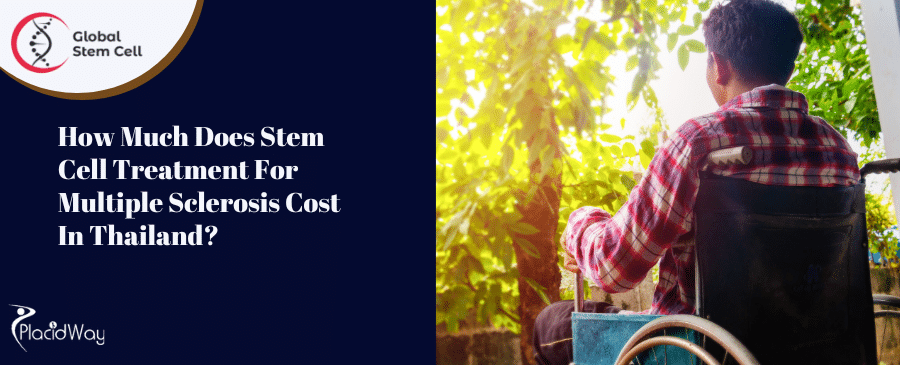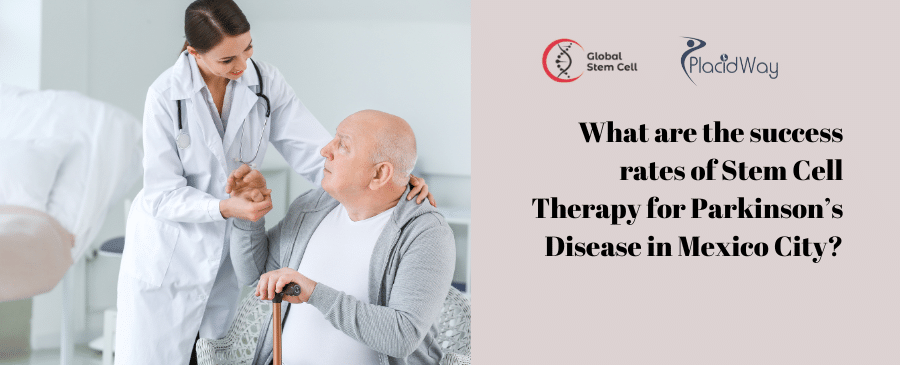Neurological conditions such as multiple sclerosis (MS), Parkinson’s disease (PD), and spinal cord injuries (SCI) present considerable challenges for patients and healthcare systems across the globe. These disorders disrupt the nervous system, resulting in motor impairment, cognitive difficulties, and diminished quality of life. While conventional treatments have made strides, they often emphasize symptom management over finding a cure or stopping disease progression.
- Regenerative stem cell therapies demonstrate potential in treating neurological disorders such as MS, Parkinson’s, and SCI.
- Stem cells can help repair damaged neural tissue and encourage functional recovery.
- Colombia has emerged as a prime destination for affordable, innovative stem cell treatments.
- Stem cell therapy for neurological disorders is still experimental, with varying success rates.
- These treatments provide hope for patients facing limited options in their home countries.
Recently, regenerative medicine, particularly stem cell therapies, has shown promise as an alternative treatment for neurological disorders. These pioneering therapies aim to repair damaged neural tissues, foster healing, and restore neurological functions, offering hope to patients with limited options available in their home countries.
With Colombia now a prominent hub for stem cell therapies, it attracts patients worldwide, including Canadians seeking more advanced and accessible alternatives. This article explores the potential of regenerative therapies for neurological disorders, the specific role of stem cell treatments in facilitating neural repair, and the reasons many patients are looking to these international options, particularly in Colombia.
Understanding Neurological Disorders: Multiple Sclerosis, Parkinson’s Disease, and Spinal Cord Injuries
Neurological disorders are medical conditions that impact the brain, spinal cord, or peripheral nerves. They can severely affect motor abilities, cognitive functions, and sensory experiences, leading to significant challenges for patients. Here’s a closer examination of three major neurological disorders: multiple sclerosis, Parkinson’s disease, and spinal cord injuries.
Scleroza multiplă (SM)
Multiple sclerosis is an autoimmune condition where the body’s immune system incorrectly attacks the protective myelin sheath surrounding nerve fibers in the central nervous system (CNS). This damage results in disrupted communication between the brain and the body, leading to symptoms such as:
- Muscle weakness and spasms
- Visual disturbances
- Coordination and balance issues
- Cognitive difficulties
- Persistent fatigue
Although MS can be managed with medications aimed at slowing disease progression, there is currently no cure, and treatments primarily focus on symptom management and relapse reduction.
Parkinson’s Disease (PD)
Parkinson’s disease is a progressive neurodegenerative disorder impacting movement. It results from the loss of dopamine-producing neurons in the brain, leading to tremors, rigidity, bradykinesia (slowness of movement), and postural instability. Other symptoms may include:
- Challenges in speech and swallowing
- Cognitive decline and memory issues
- Sleep disorders
While medications like levodopa can help alleviate symptoms, there is no cure or means of reversing neuron degeneration. Deep brain stimulation (DBS) is an additional treatment option that can assist in symptom management but does not provide a cure.
Spinal Cord Injuries (SCI)
Spinal cord injuries carve a disconnection between the brain and the body due to damage in the spinal cord. Such injuries can stem from trauma, whether from accidents or falls, often resulting in paralysis or sensory loss below the injury region. SCI is classified into two categories:
- Complete SCI: Total loss of sensation and motor function below the site of injury.
- Incomplete SCI: Partial preservation of sensation and motor abilities below the injury site.
Currently, SCI has no cure, and treatments are centered around preventing further injury, rehabilitation, and improving mobility using assistive devices. Stem cell therapies have indicated promise in facilitating neural repair and potentially restoring lost functionalities.
The Promise of Stem Cell Therapy for Neurological Disorders
Stem cell therapy stands as a significant area within regenerative medicine, holding great potential for treating neurological disorders. Stem cells, which are undifferentiated cells, possess the ability to evolve into specialized cells such as neurons, glial cells, and other tissues. In terms of neurological disorders, stem cell therapy aims to regenerate impaired neural tissue, lessen inflammation, and support functional recovery.
Stem cells can originate from various sources, including:
- Celule stem embrionare (ESC): Sourced from early-stage embryos, these cells can evolve into any body cell type, including neurons. However, ethical dilemmas and the chance of immune rejection have curtailed their clinical application.
- Adult Stem Cells: These are found in various tissues, including bone marrow, adipose tissue, and umbilical cord blood. Although less versatile than embryonic stem cells, they can still differentiate into specialized cells, including neurons. Adult stem cells are the most prevalent type utilized in stem cell therapies for neurological conditions.
- Celule stem pluripotente induse (iPSC): These are adult cells that have been genetically reprogrammed to revert to a pluripotent state, akin to embryonic stem cells. iPSCs show potential in developing neural cells for treating neurological disorders.
How Stem Cells Help Treat Neurological Disorders
Stem cell therapy operates through facilitating the regeneration of damaged tissues, enhancing neural function, and targeting the fundamental causes of neurological disorders. Here’s how stem cell therapy may assist patients suffering from MS, PD, and SCI:
- Regeneration of Neural Tissue: Stem cells can differentiate into neurons or glial cells, potentially repairing or replacing damaged neurons and myelin in MS patients or restoring lost motor functions in SCI and PD patients.
- Reducerea inflamației: Many neurological disorders, such as MS and PD, correlate with chronic inflammation. Stem cells possess anti-inflammatory properties that may aid in diminishing inflammation in affected areas, thus alleviating symptoms.
- Improvement in Motor Function: For conditions like Parkinson’s disease and spinal cord injury, stem cells may contribute to regenerating damaged tissues and enhancing motor functions such as movement and coordination. Research indicates that stem cell therapy can improve motor recovery in SCI patients, allowing them to regain mobility.
- Neuroprotection: Stem cells could provide protection to surviving neurons from additional damage, possibly slowing the progression of disorders like Parkinson’s and MS while safeguarding cognitive functions.
Why Colombia Is a Popular Destination for Stem Cell Treatment
Colombia has emerged as a prominent destination for stem cell therapies, particularly for patients seeking alternatives to standard treatments for neurological disorders. Here are key reasons why many patients, including those from Canada, are pursuing stem cell treatments in Colombia:
- Cost-Effective Treatments: Stem cell therapy in Colombia is far more affordable compared to the costs in Canada or the United States. The lower expenses associated with medical procedures, combined with excellent care quality, renders Colombia an appealing choice for patients seeking treatment abroad.
- Advanced Medical Facilities: Colombia boasts numerous state-of-the-art medical centers specializing in stem cell therapies. These clinics are outfitted with cutting-edge technology and staffed by seasoned professionals with expertise in regenerative medicine.
- Experienced Specialists: Many Colombian physicians have received extensive training in stem cell therapy and possess experience treating international patients, enabling them to provide tailored treatment plans aimed at individual patient needs.
- Shorter Wait Times: In countries like Canada, access to experimental stem cell therapies may be restricted due to extensive waitlists and regulatory challenges. In contrast, Colombia allows patients to receive therapy much more quickly, facilitating speedier recovery and potential enhancements.
- Growing Medical Tourism Industry: Colombia has become a center for medical tourism, attracting patients from across the globe in search of affordable and high-quality medical treatment. The country’s medical tourism infrastructure simplifies the access process for international patients seeking treatments.
The Process of Stem Cell Therapy for Neurological Disorders in Colombia
The procedure for stem cell therapy for neurological disorders in Colombia generally involves several stages:
- Consultation and Diagnosis: In the initial consultation, patients undergo a comprehensive evaluation, including a review of medical history, diagnostic examinations (like MRI or neurological assessments), and discussions regarding treatment objectives.
- Colecția de celule stem: Stem cells are typically obtained from the patient’s own body (autologous treatment), either from bone marrow, adipose tissue, or umbilical cord blood. In certain scenarios, donor-sourced stem cells may be utilized.
- Prelucrarea celulelor stem: The collected stem cells are prepared in the laboratory to elevate their concentration and ensure their quality.
- Injection of Stem Cells: Following processing, the stem cells are injected into the patient’s body through various methods, such as intravenous infusion, direct spinal cord injection, or localized injections at the injury or damage site.
- Follow-Up and Monitoring: Patients are meticulously monitored post-treatment to evaluate the therapy’s effectiveness. Follow-up visits are scheduled to assess progress and make necessary adjustments to the treatment protocol.
Benefits and Risks of Stem Cell Therapy for Neurological Disorders
While stem cell therapy presents considerable potential, recognizing that it remains an experimental treatment is vital. Below are the corresponding benefits and risks:
Beneficii:
- Possibility of neural tissue regeneration and functional recovery
- Reduction of symptoms like tremors, rigidity, and motor dysfunction
- Enhanced mobility and quality of life for spinal cord injury patients
- Decrease in inflammation and neuroprotection for conditions such as MS and Parkinson’s
Risks:
- Limited long-term safety and efficacy data on stem cell therapy
- Potential side effects, such as infections or immune reactions to stem cells
- Variability in individual patient responses, as not all patients may benefit from stem cell therapy
Cost of Stem Cell Treatment in Colombia
One primary reason for patients traveling to Colombia for stem cell therapy is the treatment’s affordability. The cost of stem cell therapy in Colombia is considerably lower than in other nations, making it available to a broader demographic of patients. Below is an estimated breakdown of the costs associated with stem cell therapy in Colombia:
| Procedură | Price Range (CAD) |
|---|---|
| Consultarea inițială | $100 – $300 |
| Stem Cell Treatment (per session) | $5,000 – $12,000 |
| Follow-Up Treatment (optional) | $500 – $2,000 |
| Travel and Accommodation (estimate) | $1,500 – $3,000 |
Patient Testimonial: Stem Cell Therapy for Neurological Disorders in Colombia
“I had been living with Parkinson’s disease for over 7 years, and the medications were only helping to manage the symptoms. I was constantly battling with tremors, stiffness, and a lack of coordination, and over time, my quality of life began to deteriorate. I felt like I was running out of options. My doctors had recommended more medication and even surgery, but I wanted to find something that could help me regain some of my lost mobility and independence.
That’s when I came across stem cell therapy in Colombia. After reading about the treatment and speaking with a few specialists, I decided to take the leap. The clinic I chose was reputable, with years of experience and a great track record of helping patients like me. The process was straightforward—after an initial consultation, I had stem cells harvested from my own body and processed for the treatment.
The results were nothing short of life-changing. Within just a few months, I started to feel improvements. My tremors were less intense, I could move more freely, and my coordination significantly improved. I felt more like myself again. It’s been a year now, and while I still manage the condition, the impact of stem cell therapy on my life has been remarkable. I have regained some independence, and I’m now able to enjoy activities I thought I’d never be able to do again.
Stem cell therapy gave me hope when I thought there was none left. If you’re considering treatment options for Parkinson’s or any neurological disorder, I highly recommend exploring stem cell therapy. It truly made a difference in my life, and I’m so grateful to have found this treatment.”
- John M., 58, Canada
Întrebări frecvente (FAQ)
Is stem cell therapy for neurological disorders effective?
Stem cell therapy has shown encouraged outcomes for patients with MS, Parkinson’s, and SCI, but its effectiveness can vary. Some patients report considerable improvements, while others may see only limited changes. Ongoing research is being conducted to better understand the long-term benefits.
Are stem cell treatments in Colombia safe?
Stem cell therapies in Colombia are typically safe when conducted by accredited clinics with qualified professionals. It’s crucial to research the clinic and specialists thoroughly before proceeding with treatment.
Cât timp este necesar pentru a vedea rezultatele terapiei cu celule stem?
Results can differ from patient to patient. Some individuals report improvements within a few months, while others may take longer to notice changes. Long-term follow-up is critical to monitor progress.
How much does stem cell therapy cost in Colombia?
The cost for stem cell therapy in Colombia varies, ranging from $5,000 to $12,000 CAD per session based on the treatment type and clinic.
Is stem cell therapy available in Canada?
Stem cell therapy for neurological issues is still experimental in Canada and not widely accessible. Consequently, many patients opt to travel abroad, particularly to Colombia, to access these treatments.
Can stem cell therapy cure Parkinson’s disease or MS?
Stem cell therapy is not a cure for Parkinson’s or MS, but it may assist in slowing disease progression, alleviating symptoms, and improving quality of life through the regeneration of damaged neural tissue.
How do I choose a reputable clinic in Colombia for stem cell treatment?
Thorough research is important when selecting clinics. Seek positive patient reviews, experienced physicians, and proper certifications from recognized medical organizations. Consulting with medical tourism agencies such as PlacidWay can also enhance the safety and reliability of your experience.
Why Choose PlacidWay for stem cell therapy cost in Colombia?
- Global Network: Access to premier medical facilities and specialists worldwide.
- Affordable Care: We connect you to cost-effective treatment options that maintain high quality.
- Personalized Support: Receive tailored guidance and assistance for your specific healthcare needs.
- Trusted Expertise: Partnered with skilled, accredited doctors and clinics situated in medical tourism hubs.
Explore Stem Cell Treatment for Neurological Disorders Today
Are you prepared to investigate the possibilities of stem cell therapy for your neurological condition? PlacidWay can connect you with top-tier medical centers in Colombia, providing high-quality care and affordable treatment options. Reach out to us today for a consultation and begin your journey toward recovery and an enhanced quality of life.







